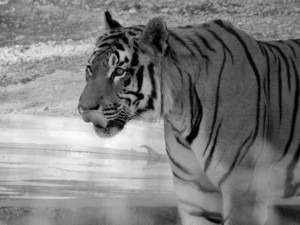 Most people, if not everyone, have had very positive experiences at the zoo. They are popular tourist attractions because they are exciting for those both young and old. Who doesn’t remember seeing their favorite animal at the zoo as a child? Seeing the lions and the tigers, the wolves and otters, and all the reptiles and birds?
Most people, if not everyone, have had very positive experiences at the zoo. They are popular tourist attractions because they are exciting for those both young and old. Who doesn’t remember seeing their favorite animal at the zoo as a child? Seeing the lions and the tigers, the wolves and otters, and all the reptiles and birds?
But every once in awhile, you will catch the eyes of what seems to be a sad and hopeless animal. Behind those dirty and smeared glass panels lies a story that goes beyond the excitement we get when we see the animals that we will never see in our backyard.
On a recent trip to the zoo, I was reminded that the zoo is not all that the cute, colorful, and interesting as animals might make it out to be.
After first observing the big striped tiger pacing back and forth in front of the glass wall, most are taken aback by the size and majesty of the animal. But then, someone asks the question as to why is the tiger pacing back and forth in disturbing repetition? You are reminded that the tiger has nowhere to go, and probably has nothing to do, since it lives in a zoo where the food and water are provided for it.

Many people question the ethics involved in animals that are held in captivity. Many people will argue that animals belong in the wild and that it is cruel for them to not be “where they belong.” Sometimes it is sad seeing animals in the zoos and thinking that they should be out in the wild with their “brothers and sisters.” It is difficult to imagine how dull the animals’ routine lives can be, even for the ones that have been raised entirely in captivity. There is a part of me that would rather see the animal released into the wild, where they would have more space to live and roam, instead of spending their entire life pacing in front of a glass pane in-between their sleep cycles.
But that brings up an equally pessimistic point about the conditions of animals in the zoo. Many of the animals in zoos are there as a part of a conservation program. Some animals, like the Amur tiger, are doing so poorly in the wild that their endangered existence has deemed it more beneficial for them to be placed in zoos, where they are safe from poaching and a decreasing habitat in Russia. So while it is nice to think that many of the animals in the zoo would be happier if they were released back into the wild (which some are), many of these animals do not have safe homes to go back to.
As time continues, zoos remain a last sanctuary for those animals that have nowhere else to go. Is it enjoyable to see animals that only live in zoos, disconnected from their natural past, or would we rather not be reminded of the tragic story behind each exhibit?